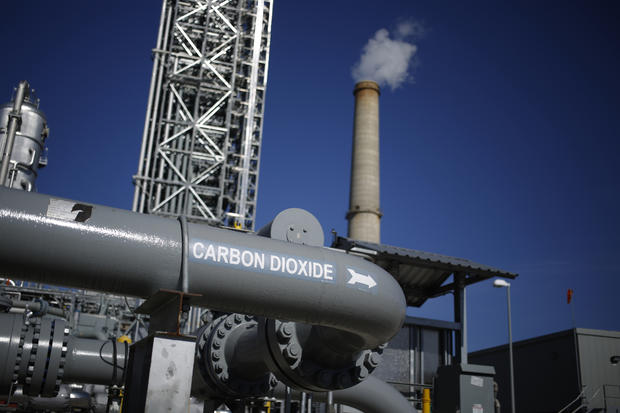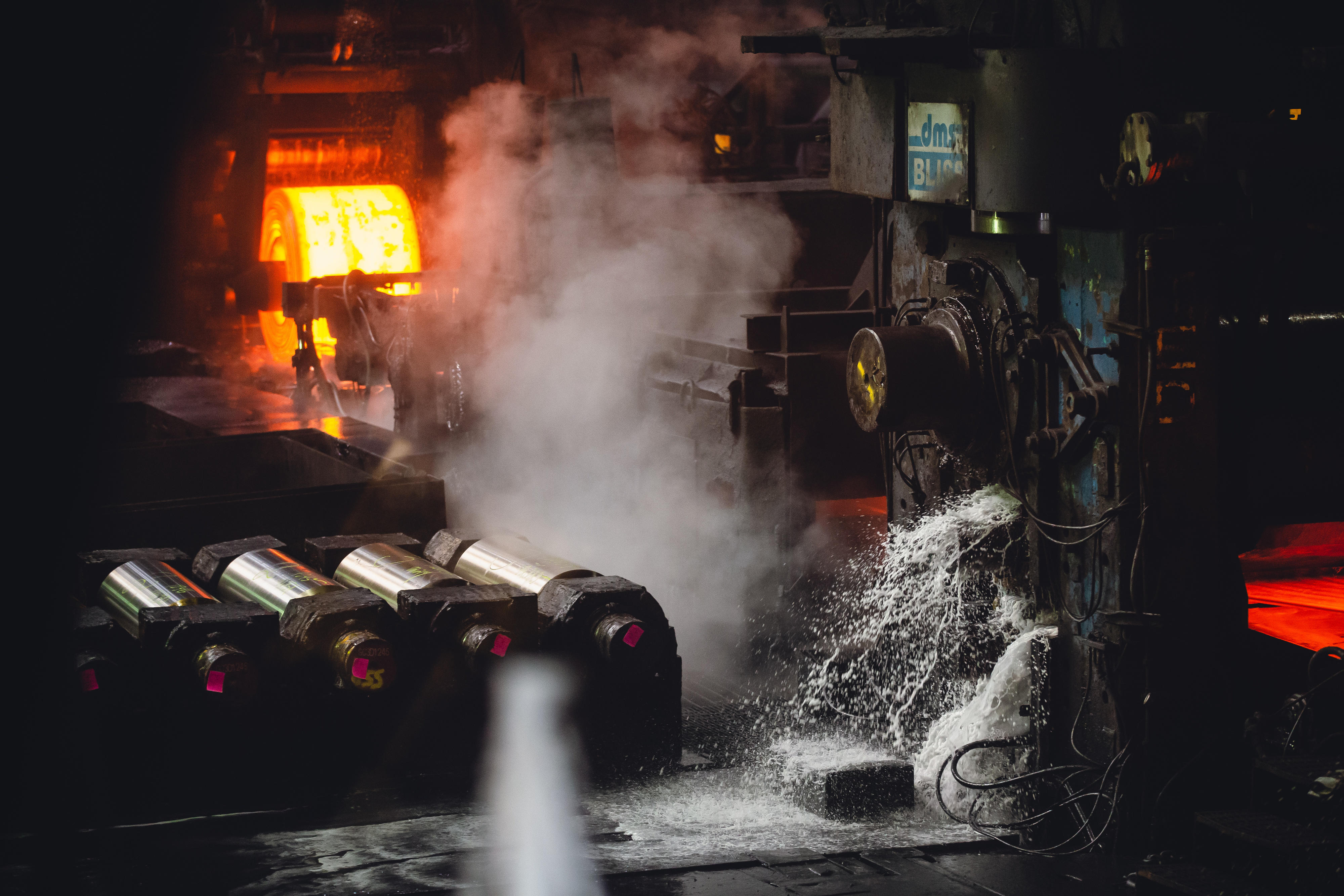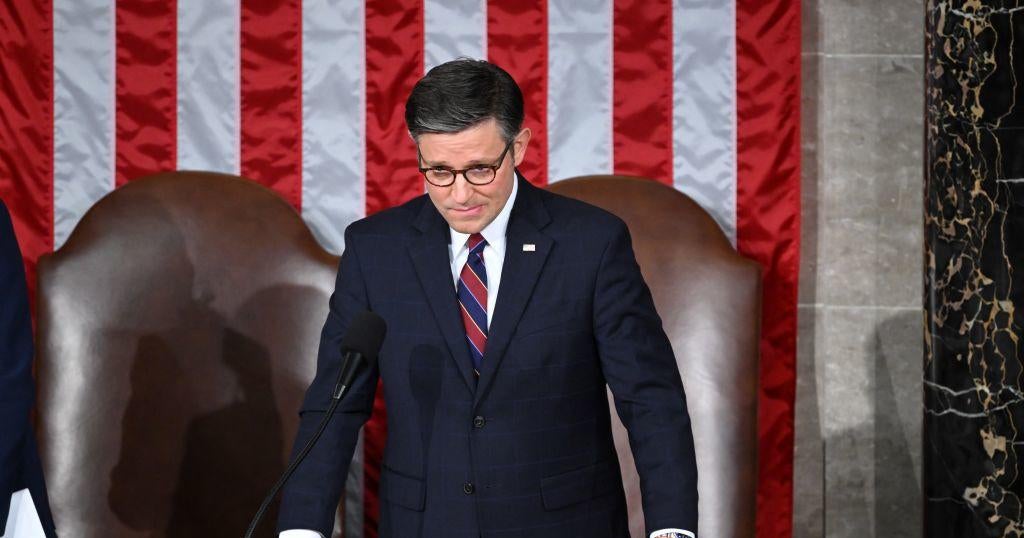Congress is spending billions on carbon capture. Is it a climate savior or a boondoggle?
While much of President Joe Biden's climate change agenda has stalled in Congress, there is one nascent — and controversial — technology for reducing carbon emissions that has received billions in public funds in 2020 and 2021: Carbon capture.
Last year's infrastructure legislation gave the largest amount of funding ever to carbon capture projects, at $12 billion. And lawmakers are debating dramatically increasing funding for carbon capture in the stalled Build Back Better Act.
Carbon capture, which removes CO2 emissions from high-polluting sources like industrial facilities or power plants, could play an increasingly important role in global efforts to stave off the worst effects of climate change, according to international regulatory bodies. The International Energy Agency last year projected that carbon capture would account for nearly 15% of all the ways that we remove carbon, and the International Panel on Climate Change endorsed it as part of a suite of net-zero CO2 emissions scenarios.
"There is no solution to get to net-zero without carbon capture technology," Collin O'Mara, president and CEO of the National Wildlife Federation, told reporters last week.
"As big as solar"
Globally, we will need to capture about 4 billion to 7 billion tons of carbon dioxide annually in order to meet climate goals, according to Julio Friedmann, a senior research scholar at the Center on Global Energy Policy at Columbia University. He noted that in most sustainable climate models, carbon capture plays as big a role as renewable energy.
"Carbon capture on power plants looks as big as solar, or wind. It's bigger than nuclear in most of these models. It's as big as stopping eating meat," he said.
But environmentalists are skeptical of funding a technology they say is too expensive and rarely works, as many high-profile carbon capture projects shutter or run into snags.
Just this month, reports found that two carbon capture facilities in Canada were underperforming — one power plant was capturing just half the carbon it had advertised, while a facility supposed to be creating clean hydrogen was actually emitting the equivalent of 1.2 million cars.
"We've got 10 years to solve the climate crisis and we need to spend our money wisely," said John Noël, senior climate campaigner at Greenpeace. "Putting it in things that we know work makes more sense than funding something that's been promised for 20 years and still is ending up in failed projects."
How does carbon capture work?
Carbon capture is distinct from carbon removal. While "carbon removal" refers to pulling out emissions humans have already put in the atmosphere, "carbon capture" refers to containing that pollution at the point it's being created — like putting a scrubber on a smokestack. Carbon capture is touted as a possible solution for heavily polluting sites like oil and gas fields, cement factories, steel mills or power plants run on fossil fuels.
Take cement. It's an essential substance — and the third-largest source of carbon pollution in the world, ranking behind China and the U.S.
"Sixty percent of the carbon emissions from a cement plant have nothing to do with how the plant is heated up — it's entirely the chemistry that converts raw materials into cement," said Friedmann. Carbon pollution, he added, "[i]s inherent in the chemistry of fertilizers, in glassmaking, in hydrogen production that comes from natural gas." Globally, industrial processes make up nearly one-third of carbon emissions.
Several methods can be used to capture carbon, including chemical solvents, membranes or even bacteria. Once captured, the CO2 can be transported and injected underground forever — if it works as intended.
Big promise, minimal progress
However, the technology so far hasn't lived up to its promise.
There are a handful of carbon capture facilities currently operating in the U.S. — all in industrial facilities, including fertilizer plants and gas plants. The many efforts to capture carbon from coal plants have ended with failure.
A Kemper, Mississippi, power plant was years behind schedule and billions over budget on its carbon-capture plans before shutting down. Cost overruns and scheduling issues also plagued Hydrogen Energy California, a proposed coal-powered plant in Kern County, California.
A coal-powered plant in Thompsons, Texas, dubbed Petra Nova, opened in 2017, becoming the only U.S. coal plant with carbon capture. But its operator shut it down in 2020 for economic reasons when the price of oil plummeted and the plant could no longer sell its captured CO2 profitably.
Last month, a government watchdog report found that more than $1 billion in public funds for carbon capture projects resulted in few working projects, and no power plants with carbon capture currently in operation.
More money needed
Part of the challenge of financing carbon capture projects is their scale: They are necessarily complex projects with many moving parts.
"To learn about, let's say, solar, you could invest a few million dollars and build a small solar farm. But you really can't do that with carbon capture. They have to be big projects," said Holly Krutka, executive director of the School of Energy Resources at the University of Wyoming.
Friedmann concurs. "There is no obvious point at which the technology becomes cheap and suddenly gets deployed" without policy nudges, he noted.
Where does the carbon dioxide go?
A bigger challenge than capturing carbon is disposing of it. For climate purposes, captured carbon dioxide should be stored and never released. But most CO2 captured today is used for other extractive resources — namely, oil.
"The vast majority of [captured] carbon in this country, something like 96%, is sold back to oil companies to help them capture more oil," said Noel of Greenpeace.
That's the opposite of what the planet needs. Wealthy nations will have to cut back on fossil-fuel extraction by more than half to meet the climate goals set during the Paris Climate Accords.
LanzaTech, a carbon capture company headquartered in Illinois, is one of several exploring how to turn captured carbon into products, and has recently rolled out running shoes, clothes and cleaning liquids made from recycled carbon emissions.
And a tax credit that was expanded in 2018 now pays some industrial producers for storing carbon. That credit could be expanded or even doubled in the currently stalled Build Back Better Act, which would allow many more carbon capture projects to be profitable.
Eyes on profit, not prize
Academic supporters of carbon capture and storage (CCS) typically note that it is part of a broad suite of decarbonizing technologies, along with other emissions-reducing efforts, such as moving the electric grid to renewables, switching to electric cars and improving energy efficiency in buildings.
"Pitting one technology against another, i.e., wind versus nuclear versus CCS, misses the fact that all these are needed," the University of Wyoming's Krutka noted.
Krutka drew a parallel between solar and wind technologies, which were very expensive when they were first developed and became cheaper partly through government-funded research and development.
"Carbon capture projects haven't received near the support at the commercial scale that other technologies have received and the technology remains at a very early stage of deployment," she said.
But some environmentalists point out that there is a trade-off between capturing carbon and avoiding its production altogether.
"There is a limited amount of money," said Shannon Fisk, managing attorney of the coal program at Earthjustice. Spending several billion on pilot projects to capture carbon emissions means not spending that money on building out solar and wind farms and power transmission lines, he said.
"If we're serious about climate change, we need to double down … build a grid that's 100% clean, rather than keeping fossil plants alive on this, to date, elusive promise that someday they will be carbon-free," he said.
And therein lies the problem. On the one hand, carbon capture is touted as a solution as part of a broader move away from fossil fuels — only to be used for those sectors that are hard to decarbonize. In other words, make all cars electric, build more solar and wind power, and reserve carbon capture to make steel plants cleaner.
But in the political climate of the last two decades, advocates of fossil fuels have held up the carbon capture technology as a way of keeping polluting plants running beyond their expiration date, environmentalists say.
"They're clearly endorsing something to maintain their industry without addressing the lion's share of the problem, which is that any scenario implies a massive lowering of emissions, with some carbon capture on the margins," said Noël of Greenpeace.
A serious reading of sustainable development plans would lead governments to abandon many of their oil and gas fields, build out electric transportation infrastructure and put more renewable energy on the grid, he said. Instead, many fossil-fuel companies are expanding while promising to capture the carbon they generate — while asking for public funding to do so.






